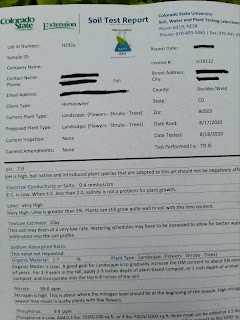Conducting a soil test will help you make informed decisions on soil amendments and fertilizers, as well as identify potential crop production problems. The key elements affecting our soils are physical structure, including the amount of clay content, the pH and soil fertility.
Testing your garden soil can be accomplished at home using soil test kits or soil samples can be sent to a testing lab for analysis. If you decide to test your soils at home, it’s important to include a test that will measure the acid-alkaline balance, known as soil pH level. Soil pH affects the availability of nutrients to vegetable plants, as well as the microbial activity in your soil. No matter the quality of the fertilizer or supplements you apply, tomato and vegetable plants can’t use them if the pH is too high. Soil pH is a measure of the acidity or alkalinity of a soil. On the pH scale, 7.0 is neutral, above 7 is alkaline, below 7 is acidic. Bleach for example is very alkaline. Lemon juice is very acidic. Most plants prefer a pH of between 6.5 and 7. Our soils are typically greater than 7.
This soil check kit is an easy and quick way to check the pH levels in your garden. Begin by adding the contents of the green capsule in the test tube. Next, add a small of soil and fill with water. Put the cap back on the tube and shake vigorously. Match the color of the tube to the chart to determine the pH of your soil. A pH meter can be used to test soil. Home test kits are also available to measure the Nitrogen, Phosphate and Potash levels in your garden beds.
For a more extensive test of your garden soil, send a sample to the CSU test lab, located in Fort Collins. You can pick up a mailer and test instructions in the Hardgoods section of the store. The mailer is free, but you do pay a fee to CSU for the test. The basic test includes an analysis of soil structure, pH, salt content and nutrient levels in the soil. The lab will also share their interpretation of the test results. Whether you test your own soil or use the lab at CSU, bring us the results. We'll recommend the right amendments and fertilizers to make your garden soil healthier and more productive. In addition to pH and nutrient levels, the structure, physical makeup and organic content of your soil has a direct impact on your garden’s productivity.
The Jar Test is a quick, easy way to help you determine the structure and physical makeup of your soil. You’ll need a clean jar with a lid, in this case a peanut butter container. Put 4-5 ounces of soil in the bottom of the jar. Add enough water to fill the jar 2/3 full. Add a drop or two of dishwasher soap. Put the lid on and shake well, then let the jar sit undisturbed for 24 hours. You’ll see that the soil has settled into layers. The first layer will be sand. The second layer will be silt, followed by clay, suspended clay, then a small amount of organic material, floating at the top.
This is evident in the jar on the left. Typically, you’re going to see a small amount of sand and silt, a large percentage of clay and a small amount of organic material. As you add more organic material to your garden, your test results will look more like the jar in the middle. The jar on the right illustrates a well-amended garden soil: dark and rich, with more organic material suspended in with the clay.
To improve your garden soil and lower the pH, we recommend you add two to three inches of locally produced organic material to your garden in the spring and again in the fall. Whether you choose to do-it-yourself or send a sample to the lab in Fort Collins, a soil test will help determine the structure and fertility of your vegetable garden’s soil, key factors in getting the best tomato and vegetable production this season.






No comments:
Post a Comment